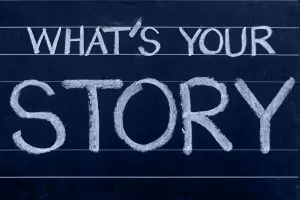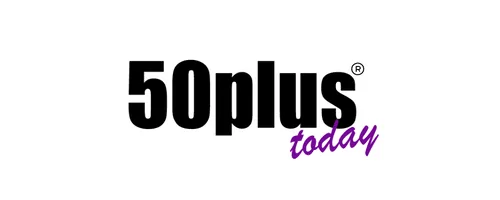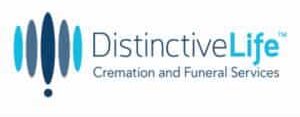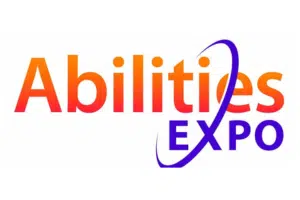by Amy Jones
Have you ever had someone tell you, “You should write a book?” or you’ve thought, “WOW! I could write a book about my …” Think back to that time and what you were talking about, the story you were telling them, or your thoughts about your experiences. Jot down feelings, memories, points of reference. These notes will help you craft your story.
We live in an era where we love to see, read, hear, and connect with people’s stories. Look at the wide variety of reality TV shows these days. Learning how others react, respond, navigate, and live life helps us on our journey as well. If you’re thinking about becoming a writer, the time is now.
In Part 2 of this series, we will discuss how to get started including writing software options, learning to write in your voice, writing styles, and other important points.
READ: Are You Ready to Become a Writer? Part 1
Basic Writing Tools

Pen, Paper, Typewriter, Journal, Diary, Computer, Phone, Spiral Binder, Napkin. No matter what you choose from the above list, be cognizant when you select your items that the more you choose, the less organized you will be. There is nothing more frustrating than trying to write a thought and needing your notes as a reference but can’t find them. OR have a huge breakthrough and have to write it on a napkin when your journal isn’t handy.
My tools of choice are a pen, journal, and laptop. I carry my pen and journal with me at all times so if I have a thought, I can write it down. Sometimes, you need a voice recorder. Most cell phones come with a voice recorder app or you can download one. If your phone does not have a voice recorder, invest in a simple one ($25 – $40) to keep on hand. This can be beneficial if you are driving or have so many thoughts that you just need to get them out of your head.
How Do I Start Writing?
First, decide if this is a story only you will read or if you plan to share it. This decision sets the tone and is the core foundational aspect of your writing journey. I chose to write my story to share with others. I felt my experiences related to emotional abuse, cancer (three times), PTSD, family trauma and divorce might help others in similar situations. I wanted them to know it’s possible to heal, create a new life, and become healthy, balanced, and whole. Just on the other side of all of the chaos, hurt and devastation is restoration. Your experiences may also help others connect to you – or help you connect to yourself if you are writing only for yourself. There is a lot of healing power in shared experiences, both internal and external.
Now, let’s talk about you. You have two choices on how to start:
- If you’ve kept a diary or a journal, look back through your entries. Do you have material that you can use in your book? If yes, fantastic. If not, then let’s start at number 2.
- If you want to start from scratch, the easiest and quickest way is to write down all your thoughts. Get every single thought out of your head. You can begin by journaling (I’ll discuss the cognitive function/healing aspect in the next article) OR open up a Word document on your computer.
 There are other writing software options available such as Scrivener, Evernote, Pages, Google Docs, Fast Pencil, and a host of others. I tried Scrivener, Evernote, and Fast Pencil and liked Fast Pencil best. I have a little bit of technology aptitude, however, I don’t want to have to learn something too complicated as I need the time to write. I recommend you choose something simple that does not bog you down or take away valuable writing time.
There are other writing software options available such as Scrivener, Evernote, Pages, Google Docs, Fast Pencil, and a host of others. I tried Scrivener, Evernote, and Fast Pencil and liked Fast Pencil best. I have a little bit of technology aptitude, however, I don’t want to have to learn something too complicated as I need the time to write. I recommend you choose something simple that does not bog you down or take away valuable writing time.
What I like about the three options I tried is the ability to “drag and drop” chapters. They all give an overview of your project which is a great visual. Another consideration is whether you need to choose an online option that you can access from anywhere. If writing on a computer and saving files on the local hard drive, make sure you have a backup system in case you have an issue. I can’t tell you how many of my clients had their computer crash and lost their files. No Bueno!!! When I reached the end of writing my book, Better for Being Broken, I exported it from Fast Pencil to a Word file for the final edits. Simple, user friendly and I’m comfortable with the word program.
Learn to Write in Your Voice

Have you noticed how the English language evolved over the past 200 years? Even in the last 20 years, our language is ever-changing. Each generation seems to find new ways to express themselves. The development of language from William Shakespeare’s era to today is mind-boggling. When you write, focus on writing as you speak. Don’t make it complicated. There may be times when the way you speak is not grammatically correct. In that case, you need to decide how important it is to write in your voice and why. For me, I needed to write in my voice because I’m also a speaker. When people come to my events, I want to ensure my voice is the same one I use when I write.
Additionally, don’t use complex sentence structures or words you wouldn’t use on a day-to-day basis. Robert Charles Lee, a published writer, says “3,000 words will cover 95% of everyday writing for common texts and speech like newspapers, blogs, most books, movies, etc. Out of those 3,000 words, only the first 1,000 are used in 89% of everyday writing.” R.L.G. at The Economist states, “Based on test results at TestYourVocab.com, most adjust native test-takers range from 20,000-35,000 words.” Just because we have a broad word base doesn’t mean we need to use them to write our stories. Keep things simple.
Writing Style & Structure
 I conducted a lot of research on how to write; writing style, sentence structure, paragraph length, and word counts, and even followed a chapter formula to ensure my writing was consistent.
I conducted a lot of research on how to write; writing style, sentence structure, paragraph length, and word counts, and even followed a chapter formula to ensure my writing was consistent.
The takeaways from my research were interesting, but not at all what I expected.
- The attention span of people is shorter now than ever – decreasing from 12 seconds in 2000 to 8 seconds in 2018.
- Most people tend to scan vs. read. Their eyes look for certain words or phrases in a sentence or paragraph rather than reading the entire thing.
- According to the Washington Post in 2018, the share of Americans who read for pleasure decreased by 30% since 2004 with a higher decline rate among men.
- The shorter the book, the more likely someone will finish it.
And the good news:
- Adult non-fiction showed the largest growth with a 5.4% revenue increase from 2016-2017, according to the StatShot Annual Report from the Association of American Publishers.
- Audiobooks are the fastest growing format, with a massive 28.8% growth from 2016-2107.
- Reading significantly reduces stress and may be one of the fastest, most effective ways to reduce stress, especially in adults.
- Reading just 30 minutes a week contributes to feeling more satisfied with life.
Keeping all these points in mind will help you determine the structure, voice, and basic composition of your chapters and, ultimately, your book.
In part 3 of this series, we will discuss writer’s block, the emotional aspect of writing, and fine-tuning your message along with my final thoughts and advice on becoming a writer.
About the Author: Amy Jones

Amy Jones is a midlife coach, author, and international speaker. Everyone has a story to tell and a book inside of them. Once we let go of the stories that aren’t true, we feel relieved, empowered, accomplished, unburdened, and validated. That’s how Jones felt once she told her true story of surviving cancer and overcoming emotional trauma and abuse.
She’s had the highs, the lows, the scars, the bruises, the highlights, and the low lights that she can now reflect on in this ever-evolving journey of life that we are on. Amy’s passion has always been helping people and being of service. Through her trials and triumphs, as well as the experiences of her clients, Amy’s goal is to help people build a life just like she’s done; a life they love waking up to every morning feeling anything is possible.
Pick up one of Jones’ books: Better for Being Broken or Break Through or visit TheAmyJones.com when you are ready to revive your life or write your story.










